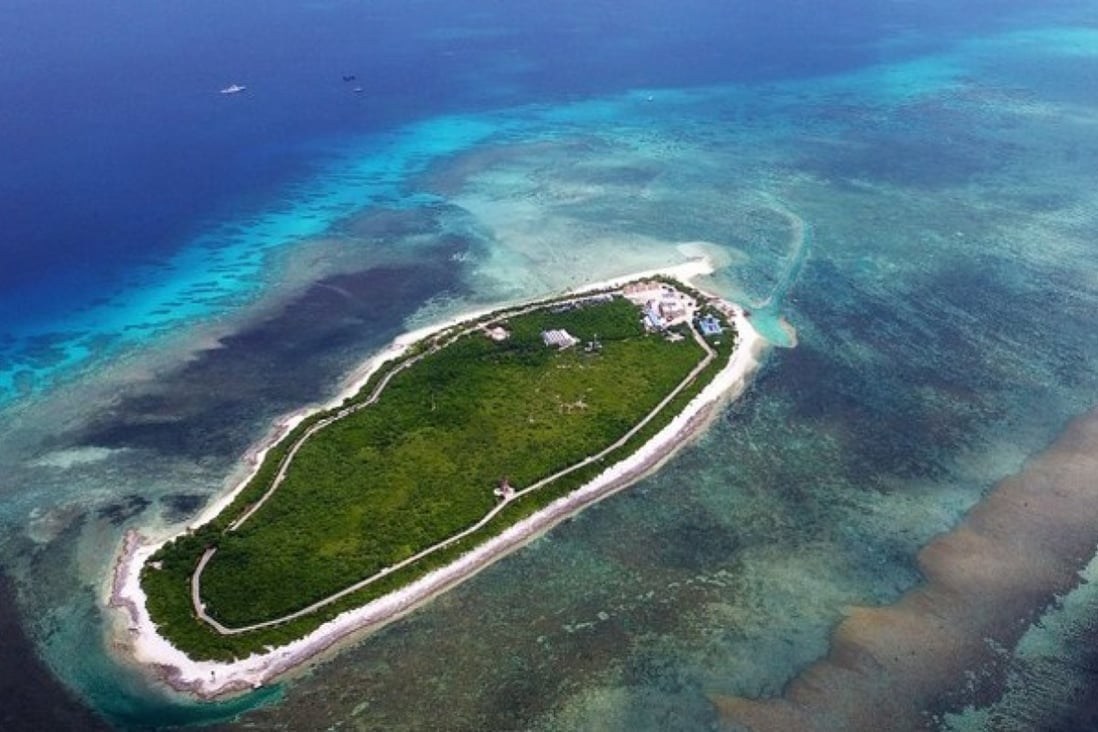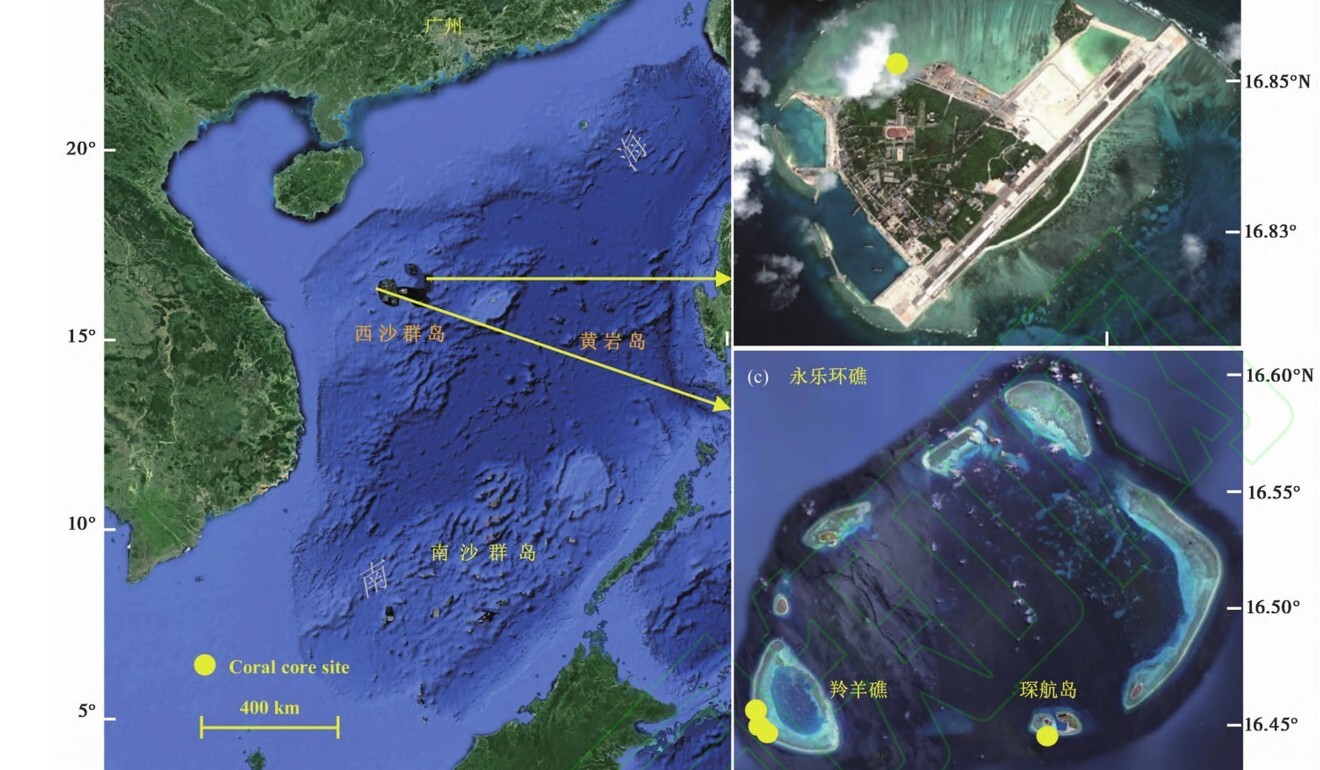
The Chinese team collected coral reef samples from Yongle (pictured) and Yongxing in the Paracel Islands. Xinhua
- Investigation of coral reefs in the Paracel Islands suggest the South China Sea began warming up in 1825, researchers say
- Uranium dating shows samples have a continuous climate record going back to 1520
South China Morning Post | Stephen Chen | 7 Feb, 2021
That was the year the world’s first railway began operating in England and most ocean-going ships still used wind power.
Man-made carbon dioxide emissions could not fully explain such an early rise in the warming trend, they said in a peer-reviewed paper published in Quaternary Sciences on Friday.
The Paracel coral record “will fill in some important gaps in global high resolution marine environment records and help us better understand the history of environmental change in tropical waters”, said the researchers, led by Tao Shichen from the South China Sea Institute of Oceanology.
Coral reefs provide useful climate records because the higher the temperature the faster they grow. The Paracels have one of the largest living reefs in the Asia-Pacific region, but in recent decades the archipelago has become the focal point of territorial disputes between China and Vietnam, and the construction of infrastructure has threatened the natural environment.

The Chinese study was led by Tao Shichen from the South China Sea Institute of Oceanology. Photo: Tao Shichen
The researchers studied four coral reef samples retrieved from Yongxing and Yongle, two of the largest islands in the Paracels and both controlled by China’s military. The samples were drilled from locations that have been continuously underwater and suffered minimal disturbance as a result of human activity.
With the help of uranium dating technology, the researchers found the samples contained a continuous climate record going back to 1520. To ensure the accuracy of the results, parts of the samples were also sent to a laboratory in Queensland, Australia for independent analysis.
The results showed that the temperature 500 years ago was lower than it is today. The cooling trend lasted until 1825. From that date to the present, there was “a general trend of rapid increase” with the biggest spike reaching 2.3 degrees Celsius, Tao said.
The Chinese team is not the first to carry out such research. In 2016, an international team led by Australian climate researcher Helen McGregor examined the climate records from coral skeletons, ice cores, tree rings, cave deposits, and ocean and lake sediments across the globe.
They found that global warming could have started as early as the 1830s. McGregor and her colleagues argued that carbon dioxide emissions could be the main cause of the temperature increase because the impact of the early stage of the Industrial Revolution might have been underestimated.
But the Chinese team has a different interpretation. Though man-made greenhouse gas emissions certainly existed then, they were unlikely large enough to alter the global climate, they said.
A deeper look into the Paracel coral reef records showed that the fluctuation of temperature in the region matched well to the increase in solar activity in the period. They also noticed a significant drop in volcano activity in the region, which they said could have contributed to the warming by reducing the amount of light-blocking particles in the atmosphere.
Dating the start of climate change could have some real-life implications, according to a Chinese government climate expert who was not involved in the Paracel study.
The current goal of the Paris Agreement is to keep the temperature increase below 2 degrees Celsius by mid-century. The goal was calculated based on the assumption that the warming started from the end of the 19th century.
“If it started earlier than thought, we may need to move the deadline earlier. This may cause some confusion and inconvenience,” said the expert, who asked not to be named due to the political sensitivity of the issue.


